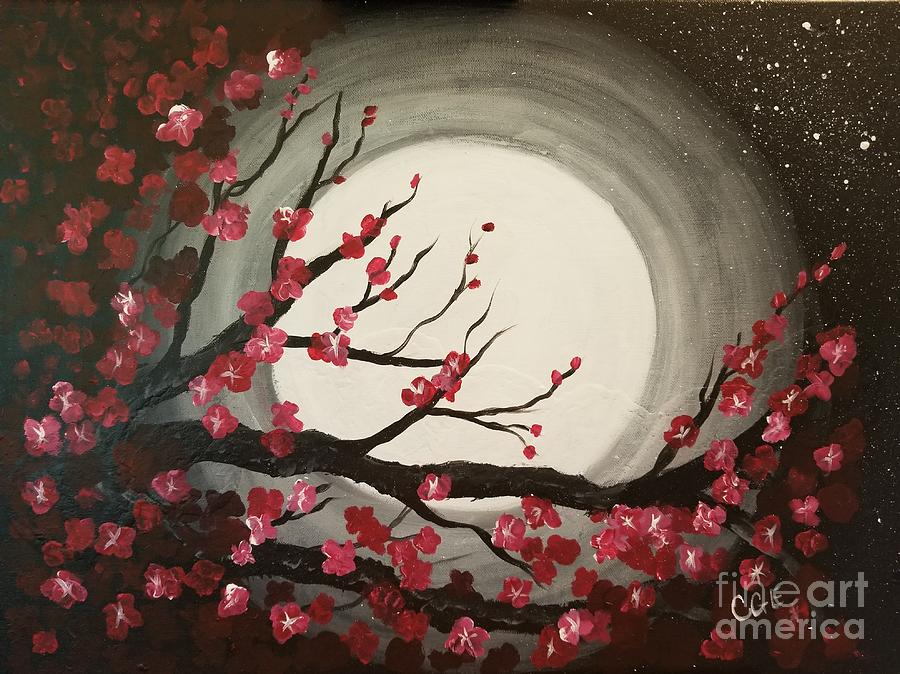Let me take you on a journey where the moon whispers secrets to blooming flowers, and the night becomes a canvas for nature's most enchanting performance. The phenomenon of "blossom in moonlight nude" is not just a phrase; it's an experience that captures the essence of life's hidden wonders. Imagine walking under the silver glow of the moon, surrounded by petals that seem to glow with an inner light. It's like stepping into a dream where nature reveals its most intimate side.
Now, you might be wondering, what exactly does this phrase mean? Well, buckle up, because we're diving deep into the world where flowers bloom under the cover of darkness, revealing their true beauty in the soft light of the moon. It's not just about flowers; it's about the magic that happens when the world slows down, and we take the time to notice the little things that make life extraordinary.
Before we dive headfirst into the details, let me assure you that this isn't just some poetic rambling. This is about understanding the science behind moonlit blooms, the cultural significance of nocturnal beauty, and how you can experience it for yourself. So, whether you're a nature enthusiast, a photography geek, or just someone looking to escape the hustle and bustle of daily life, this article has something for you.
Read also:Sono Bello Tummy Tuck Transforming Your Body Transforming Your Life
Understanding the Phenomenon of Blossom in Moonlight Nude
Picture this: the moon hangs low in the sky, casting a gentle glow over a garden that seems to come alive in the darkness. This is the essence of blossom in moonlight nude – a term used to describe the unique behavior of certain plants that bloom exclusively at night. These flowers, often called "moon flowers," have adapted to thrive in the absence of sunlight, revealing their delicate petals only when the world is quiet and still.
But why does this happen? The answer lies in evolution. Many nocturnal blooms have developed this trait to attract specific pollinators, such as moths and bats, that are active during the night. By opening their petals under the moonlight, these flowers increase their chances of reproduction, ensuring their survival in a world that never sleeps.
What Makes Moonlit Blooms Special?
Here's the kicker: moonlit blooms aren't just pretty to look at; they're also incredibly unique. Unlike their daytime counterparts, these flowers often have a distinct fragrance that becomes more pronounced at night. This aroma serves as a beacon for pollinators, guiding them to the source of nectar. Additionally, the colors of these blooms tend to be lighter, making them more visible under the soft glow of the moon.
Some of the most famous moonlit blooms include the night-blooming cereus, moonflower, and evening primrose. Each of these flowers has its own story to tell, from their evolutionary journey to their cultural significance in various parts of the world. So, the next time you're out stargazing, keep an eye out for these enchanting beauties.
Exploring the Science Behind Moonlit Blooms
Let's get scientific for a moment. The process of blooming at night is known as "nyctinasty," and it's a fascinating example of how plants adapt to their environment. During the day, many plants conserve energy by keeping their petals closed. But when the sun sets, these flowers spring into action, opening their petals to release pollen and attract pollinators.
This adaptation isn't random; it's a result of millions of years of evolution. By timing their blooms with the activity of nocturnal pollinators, these plants increase their chances of successful reproduction. It's like nature's way of saying, "Hey, teamwork makes the dream work!"
Read also:Exploring The Mysteries Of Stars In The Constellation Aries
Key Factors Influencing Moonlit Blooms
- Temperature: Cooler nighttime temperatures can trigger blooming in certain species.
- Light Levels: The soft glow of the moon provides just enough light for nocturnal pollinators to navigate.
- Humidity: Higher humidity levels at night help preserve the delicate petals of moonlit blooms.
Understanding these factors can help you create the perfect environment for cultivating moonlit blooms in your own garden. All you need is a bit of patience and a willingness to embrace the magic of the night.
The Cultural Significance of Moonlit Blooms
Throughout history, moonlit blooms have captured the imagination of poets, artists, and scientists alike. In many cultures, these flowers are seen as symbols of mystery, transformation, and renewal. For example, in ancient Greece, the night-blooming cereus was associated with the goddess Selene, who personified the moon. Similarly, in Indian folklore, the night-blooming jasmine is believed to have healing properties and is often used in traditional medicine.
But it's not just about mythology. Moonlit blooms have also inspired countless works of art and literature. From Shakespeare's "Romeo and Juliet" to modern-day photography, these flowers continue to enchant and inspire people around the world. It's a reminder that nature's beauty knows no bounds.
Famous Moonlit Blooms in Art and Literature
Here are a few examples of how moonlit blooms have been celebrated in art and literature:
- Shakespeare's "Romeo and Juliet": The iconic balcony scene features references to moonlit blooms, symbolizing the fleeting nature of love.
- Van Gogh's "Starry Night": While not explicitly featuring flowers, this masterpiece captures the essence of moonlit beauty.
- Modern Photography: Photographers around the world have captured the ethereal beauty of moonlit blooms, creating stunning images that capture the imagination.
How to Cultivate Moonlit Blooms in Your Garden
Ready to bring the magic of moonlit blooms into your own backyard? Here's a step-by-step guide to help you get started:
Choosing the Right Plants
When selecting plants for your moonlit garden, look for species known for their nocturnal blooms. Some popular choices include:
- Night-blooming cereus
- Moonflower
- Evening primrose
- Four o'clocks
These plants not only add beauty to your garden but also provide a habitat for nocturnal pollinators like moths and bats.
Caring for Moonlit Blooms
Once you've chosen your plants, it's important to give them the care they need to thrive. Here are a few tips:
- Plant in well-drained soil to prevent root rot.
- Provide adequate water, especially during dry spells.
- Protect from strong winds, which can damage delicate petals.
- Consider adding a night light to enhance the viewing experience, but keep it dim to avoid disturbing nocturnal pollinators.
Experiencing Moonlit Blooms: Tips for Nature Lovers
Whether you're a seasoned nature enthusiast or a curious beginner, experiencing moonlit blooms can be a life-changing experience. Here are a few tips to help you make the most of it:
Best Times to Observe Moonlit Blooms
Timing is everything when it comes to observing moonlit blooms. The best time to witness these flowers in action is during the full moon, when the night is at its brightest. However, even during a new moon, you can still enjoy the subtle beauty of these blooms with the help of a flashlight or headlamp.
Tools for Moonlit Exploration
To enhance your experience, consider bringing along a few essential tools:
- Binoculars: For getting a closer look at distant blooms.
- Camera: To capture the beauty of these flowers for posterity.
- Field Guide: To help identify different species of moonlit blooms.
The Impact of Moonlit Blooms on Ecosystems
Moonlit blooms play a crucial role in maintaining the balance of ecosystems around the world. By attracting nocturnal pollinators, these flowers ensure the survival of countless plant species. Additionally, they provide food and shelter for a variety of animals, from insects to small mammals.
But that's not all. Moonlit blooms also contribute to the overall health of the planet by producing oxygen and filtering carbon dioxide from the atmosphere. It's a reminder that even the smallest things can have a big impact on the world around us.
Conservation Efforts for Moonlit Blooms
Unfortunately, many species of moonlit blooms are at risk due to habitat loss and climate change. That's why conservation efforts are more important than ever. By supporting organizations dedicated to protecting these plants and their habitats, you can help ensure that future generations will be able to experience the magic of moonlit blooms.
Conclusion: Embrace the Magic of Moonlit Blooms
In conclusion, the phenomenon of blossom in moonlight nude is more than just a natural occurrence; it's a celebration of life's hidden wonders. From the science behind nyctinasty to the cultural significance of moonlit blooms, there's so much to discover and appreciate about these enchanting flowers.
So, the next time you find yourself under the silver glow of the moon, take a moment to pause and appreciate the beauty that surrounds you. And if you're feeling adventurous, why not try cultivating your own moonlit garden? Who knows? You might just discover a new passion for the magic of the night.
Don't forget to share your experiences in the comments below, and be sure to check out our other articles for more insights into the wonders of the natural world. After all, life's too short not to embrace the beauty that's right in front of us.


